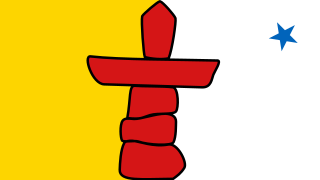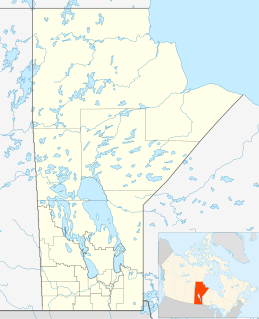The Métis in Canada are specific cultural communities who trace their descent to First Nations and European settlers, primarily the French, in the early decades of the colonisation of the west. These Métis peoples are recognized as one of Canada's aboriginal peoples under the Constitution Act of 1982, along with First Nations and Inuit peoples. April 8, 2014 the Supreme court of Canada Daniels vs Canada appeal held that “Métis and non status Indians are “Indians” under s. 91(24) “, but excluded the Powley test as the only criteria to determine Metis identity. The judge went on to say in section 17 that “Metis….can be used as a general term for anyone with mixed European and Aboriginal heritage…” As of 2016, 587,545 individuals self-identified as "Métis". Canadian Métis represent the majority of people that identify as Métis, although there are a number of Métis in the United States.

Indigenous Canadians, also known as Aboriginal Canadians, are the indigenous peoples within the boundaries of Canada. They comprise the First Nations, Inuit and Métis, or by the initialism FNIM, Although "Indian" is a term still commonly used in legal documents, the descriptors "Indian" and "Eskimo" have somewhat fallen into disuse in Canada and some consider them to be pejorative. Similarly, "Aboriginal" as a collective noun is a specific term of art used in some legal documents, including the Constitution Act, 1982, though in some circles that word is also falling into disfavour.
In Canada, the First Nations are the predominant indigenous peoples in Canada south of the Arctic Circle. Those in the Arctic area are distinct and known as Inuit. The Métis, another distinct ethnicity, developed after European contact and relations primarily between First Nations people and Europeans. There are 634 recognized First Nations governments or bands spread across Canada, roughly half of which are in the provinces of Ontario and British Columbia.

The Minister of Crown–Indigenous Relations is one of two Canadian cabinet ministers who administer Crown-Indigenous Relations and Northern Affairs Canada (CIRNAC), which is responsible for administering the Indian Act and other legislation dealing with "Indians and lands reserved for the Indians" under subsection 91(24) of the Constitution Act, 1867. The minister is also more broadly responsible for overall relations between the federal government and First Nations, Métis, and Inuit. The current version of the position was created alongside the Minister of Indigenous Services when Prime Minister Justin Trudeau announced on August 28, 2017 that the federal government intended to abolish the Indigenous and Northern Affairs Canada department.
In Canada, an Indian reserve is specified by the Indian Act as a "tract of land, the legal title to which is vested in Her Majesty, that has been set apart by Her Majesty for the use and benefit of a band."
The Indian Register is the official record of Status Indians or Registered Indians in Canada. Status Indians have rights and benefits that are not granted to unregistered Aboriginal Canadians, Inuit, or Métis, the chief benefits of which include the granting of reserves and of rights associated with them, an extended hunting season, a less restricted right to bear arms, an exemption from federal and provincial taxes on reserve, and more freedom in the management of gaming and tobacco franchises via less government interference and taxes.
The Royal Commission on Aboriginal Peoples (RCAP) was a Canadian Royal Commission established in 1991 to address many issues of Aboriginal status that had come to light with recent events such as the Oka Crisis and the Meech Lake Accord. The commission culminated in a final report of 4,000 pages, published in 1996. The original report "set out a 20-year agenda for implementing changes."
In Canada, an Indian band or band, sometimes referred to as a First Nation band or simply a First Nation, is the basic unit of government for those peoples subject to the Indian Act. Bands are typically small groups of people: the largest in the country, the Six Nations of the Grand River First Nation had 22,294 members in September 2005, and many have a membership below 100 people. Each First Nation is typically represented by a band council chaired by an elected chief, and sometimes also a hereditary chief. As of 2013, there were 614 bands in Canada. Membership in a band is controlled in one of two ways: for most bands, membership is obtained by becoming listed on the Indian Register maintained by the government. As of 2013, there were 253 First Nations which had their own membership criteria, so that not all Status Indians are members of a band.
The House of Commons Standing Committee on Indigenous and Northern Affairs (INAN) is a standing committee of the House of Commons of Canada. It was formerly known as the House of Commons Standing Committee on Aboriginal Affairs and Northern Development.

Nunavut is the newest, largest, and most northerly territory of Canada. It was separated officially from the Northwest Territories on April 1, 1999, via the Nunavut Act and the Nunavut Land Claims Agreement Act, though the boundaries had been drawn in 1993. The creation of Nunavut resulted in the first major change to Canada's political map since incorporating the province of Newfoundland in 1949.
The Indian Health Transfer Policy of Canada, provided a framework for the assumption of control of health services by Aboriginal Canadians and set forth a developmental approach to transfer centred on the concept of self-determination in health. Through this process, the decision to enter into transfer discussions with Health Canada rests with each community. Once involved in transfer, communities are able to take control of health program responsibilities at a pace determined by their individual circumstances and health management capabilities.
Over the course of centuries, many Indigenous Canadians have played a critical role in shaping the history of Canada. From art and music, to law and government, to sports and war; Indigenous customs and culture have had a strong influences on defining Canadian culture. The Indspire Awards are the annual awards presented by Indspire, formerly the National Aboriginal Achievement Foundation. The awards were first established in 1993 in conjunction with the United Nations declaring the 1990s "International Decade of the World's Indigenous peoples". June 21 is Canada's National Aboriginal Day, in recognition of the cultural contributions made by Canada's indigenous population. The day was first celebrated in 1996 following Governor General of Canada Roméo LeBlanc's proclamation.
The following is an alphabetical list of topics related to Indigenous peoples in Canada, comprising the First Nations, Inuit and Métis peoples.

Marcel Colomb First Nation (MCFN), Band #328, is a First Nations Band of approximately 449 Registered Swampy Cree and Rocky Cree (Asinīskāwiyiniwak) located in the area of Lynn Lake, Manitoba, Canada. Marcel Colomb First Nation is affiliated with the Swampy Cree Tribal Council.
The Sixties Scoop refers to a practice that occurred in Canada of taking, or "scooping up", Indigenous children from their families and communities for placement in foster homes or adoption. Despite the reference to one decade, the Sixties Scoop began in the late 1950s and persisted into the 1980s. It is estimated that a total of 20,000 aboriginal children were taken from their families and fostered or adopted out to primarily white middle-class families as part of the Sixties Scoop.
According to the latest available data, Statistics Canada estimates 4,157 suicides took place in Canada in 2017, making it the 9th leading cause of death, between Alzheimer's Disease (8th) and Cirrhosis and other liver diseases (10th). In 2009, there were an estimated 3,890 suicide deaths.
Indigenous or Aboriginal self-government refers to proposals to give governments representing the Indigenous peoples in Canada greater powers of government. These proposals range from giving Aboriginal governments powers similar to that of local governments in Canada to demands that Indigenous governments be recognized as sovereign, and capable of "nation-to-nation" negotiations as legal equals to the Crown, as well as many other variations.
Indigenous land claims in Canada are demands from indigenous peoples to have their land rights and their Aboriginal titles be respected by the authorities. They are one of the main issues facing indigenous peoples in Canada today.
Recognition and Implementation of Indigenous Rights Framework (RIIRF) is a legislation and policy initiative intended to be undertaken in "full partnership with First Nations, Inuit, and Métis Peoples" that was announced during a speech in the House of Commons of Canada by Prime Minister, Justin Trudeau on February 14, 2018. It was "meant to enshrine the Constitution's section 35, which affirms Aboriginal rights, in federal law, allowing First Nations to reconstitute their governance structures outside the Indian Act."






